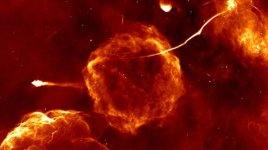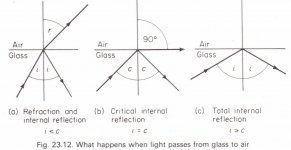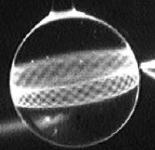I have never see Matrix movies. I just googled agent Smith . I don't know the full context . I Guess . i have to watch it now .
I posted up here a few years ago a link to a presentation from one of the Profs ( Juergen Ren IIRC) at the Fraunhofer Institute talking about AE and how he got to GE. Fascinating slides. His friend Marcel Grossman (mathematician) showed him how to solve his problem using tensor calculus. I read elsewhere AE got top grades at school - not the bad grades you always hear about. AE himself said he has mastered calculus at 15. When he got to university he went off the rails for a bit like many doA E as an underachiever in school, is an urban legend.
Another one, in the same vein: His wife, a very good mathematician was the one who did the general relativity work.
The true story is, he understood he was lacking some higher maths ( tensors, topology ) to establish formally what he had in mind. So it took him a couple of years to study, upgrading in maths.
I am extremely respectful for this attitude.
When he got to university he went off the rails for a bit
He may even have gone a little MAD for a time! 😀
Attachments
I just googled agent Smith . I Guess . i have to watch it now .
Don't watch it, as it will only mess with your brAIn! 😎
He may have just been parroting her accomplishments the whole time!Yes, I believe his wife was a dedicated collaborator.
You have misread mchambin's post. He said the idea that it was Einstein's wife who did the work is also an "urban legend".
That is yet to be verified. That he and his wife were collaborators is a forgone conclusion. She was a mathematician after all. She may very well have done the maths. Doesn't mean he wasn't the one positing the theories.
That he and his wife were collaborators is a forgone conclusion.
It would be nice to recognise the contribution that female spouses and partners have made to the achievements of male scientists.
Unfortunately, in Mileva's case, there is insufficient documentary evidence to confirm that she was an unrecognised female collaborator.
That she was only the second woman to complete a full course of study in maths and physics at Zurich Polytechnic is certainly not disputed.
Wow, first name relationship! Hey, do you think there is something to the phrase "behind every successful man..."; add your own narrative. Were they in love?
Nancy Reagan was the real Pres. 😉
Nancy Reagan was the real Pres. 😉
The heart of our galaxy is obscured by dust through which only radio waves can penetrate.
Amazing images have just been released by the MeerKAT radio telescope in South Africa which reveal hitherto unseen details of the centre of our galaxy.
The mozaic in the first attachment reveals the chaotic region around the supermassive black hole at the centre of the galaxy, the expanding shells of supernova remnants and unexpectantly high numbers of the mysterious radio filaments that were first discovered over 35 years ago.
The second attachment zooms into a supernova remnant at the centre, to the left of which is a feature known as the "mouse", which is believed to be a pulsar ejected by the supernova remnant. To the upper right is one of the longest radio filaments, known as "The Snake".
More information is available over at space.com
Amazing images have just been released by the MeerKAT radio telescope in South Africa which reveal hitherto unseen details of the centre of our galaxy.
The mozaic in the first attachment reveals the chaotic region around the supermassive black hole at the centre of the galaxy, the expanding shells of supernova remnants and unexpectantly high numbers of the mysterious radio filaments that were first discovered over 35 years ago.
The second attachment zooms into a supernova remnant at the centre, to the left of which is a feature known as the "mouse", which is believed to be a pulsar ejected by the supernova remnant. To the upper right is one of the longest radio filaments, known as "The Snake".
More information is available over at space.com
Attachments
Last edited:
I’ve seen the pic on the left elsewhere. IIRC it’s about 200 light years across. Incredible that they can get such resolution. I understand how you can focus optical signals ie light with mirrors and lenses but need to find out how they do it with radio waves.
There’s some very good science going on with the meerkat array. The Australians also have a similar system on line or coming on line.
There’s some very good science going on with the meerkat array. The Australians also have a similar system on line or coming on line.
Incredible that they can get such resolution.
I decided to look into how such resolution is obtained, and it's pretty complicated stuff! 🤓
The MeerKAT array consists of 64 individual dish telescopes, each of which collects and focuses radio signals.
There is a time difference in the radio signal arriving at each dish in the array which produces phase delays. As the Earth turns, the dish telescopes tilt to keep watching the radio source and this causes the phase delays to change.
The more phase variations we get, the more perspectives we have on the object being observed, which leads to greater resolution in the image.
That's all assisted by massive data processing of course!
Read about this and more in this article: https://public.nrao.edu/telescopes/radio-telescopes/
More info' on MeerKAT can be found here: https://en.wikipedia.org/wiki/MeerKAT
Attachments
Thanks Galu I’ll take a look. As you may have ascertained I’m originally from that part of the world. Fabulous night skies for star gazers!
🙂
🙂
I have question . If we make a sphere of a refractive material . In which , With the refrective index linearly decreasing with increasing radius of that sphere . Will a photon of light can orbit it . Like matter orbit matter .
Photons can travel around the inside of a glass sphere provided they always hit the boundary between the glass and the surrounding air at an angle of incidence which exceeds the critical angle corresponding to the refractive index of the glass. This results in what is known as 'total internal reflection'.
Scientists have trapped light in this way within microspheres. The effect is analagous to a "whispering gallery", where sound waves can bounce repeatedly around a circular chamber.
The Hamilton Mausoleum in Scotland used to hold the record for the longest echo within any man-made structure in the world, taking 15 seconds for the sound of a slammed door to fade.
http://physicsbuzz.physicscentral.com/2016/03/bigger-on-inside-scientists-trap-light.html
Scientists have trapped light in this way within microspheres. The effect is analagous to a "whispering gallery", where sound waves can bounce repeatedly around a circular chamber.
The Hamilton Mausoleum in Scotland used to hold the record for the longest echo within any man-made structure in the world, taking 15 seconds for the sound of a slammed door to fade.
http://physicsbuzz.physicscentral.com/2016/03/bigger-on-inside-scientists-trap-light.html
Attachments
Did you not read the link?
i believe that the quantum tunnelling of photons will ultimately frustrate the total internal reflection.
i believe that the quantum tunnelling of photons will ultimately frustrate the total internal reflection.
Last edited:
- Status
- Not open for further replies.
- Home
- Member Areas
- The Lounge
- What is the Universe expanding into..






